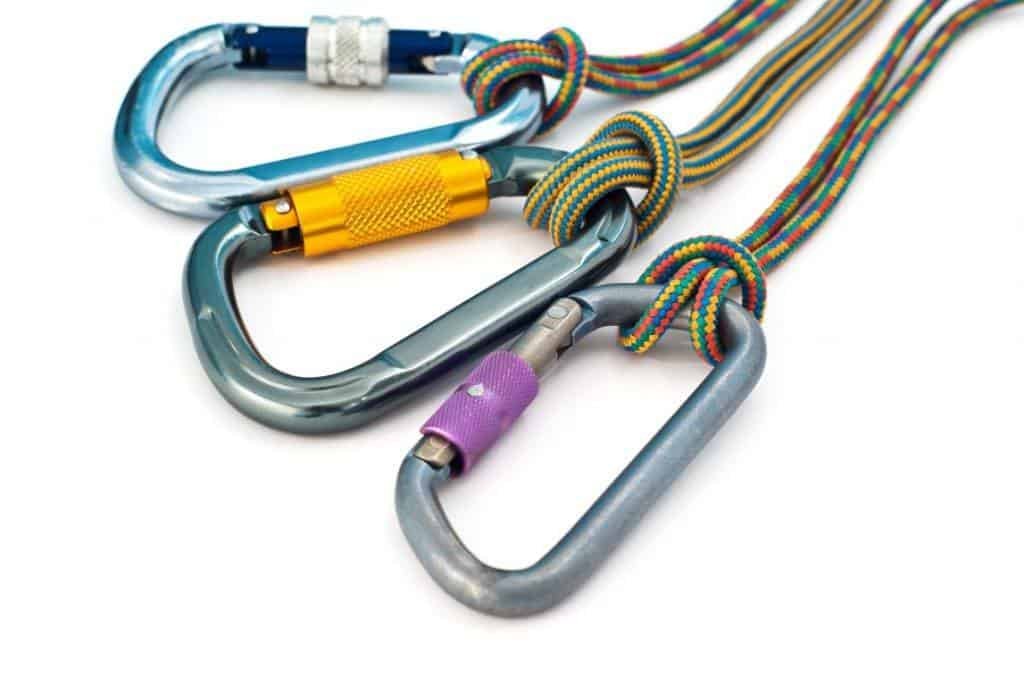A lot of people are taking notice of sport climbing nowadays as a means to improve their health. It does have a lot of benefits aside from the usual physical changes.
Preparing and knowing your route is important in sport climbing, but how many quickdraws do you need?
How Many Quickdraws Do I Need For Sport Climbing
Quickdraws connect the rope to the established protection. Using quickdraws in a climb keeps the path of ropes straight, making the ascent easier. It reduces friction which can damage equipment and lead to accidents. Quickdraws also produce less rope drag. This makes for a more fluid, natural climbing movement.
The question still remains, how many quickdraws do I need for sport climbing?
A lot of sport climbers profess that most routes only require you to prepare 10-12 quickdraws. Some routes would be more difficult than others. Being prepared can be the difference between life and death. You might face unexpected equipment breakage sometimes and having spares would definitely help.
Ordinary routes would entail the use of 10-12 quickdraws. It would be better to have another 12 quickdraws handy. It may look redundant but it is better to be prepared than sorry. Quickdraws are not that heavy anyway. They would not encumber you that much on a climb.
Choosing Quickdraws
You need to choose quickdraws that are strong and reliable. It will be part of your personal safety chain. You only want the best quickdraws in your pack.
Your choice of quickdraws is important because it is equipment that is meant to last. It should last you from two years to a decade of continuous use. There are technical specifications that you also need to consider.
Choose quickdraws that are anodized, a process that protects the gear from corrosion. Also, make sure that your gear passed the standards of the European Committee for Standardization (CEN). This would mean your gear can withstand pressure and drops from heights. This would protect you in the long run.
Safety Equipment
Let’s talk now about the basic safety equipment needed for sport climbing as a hobby. If you are considering taking it up, it pays to have the following items:
Harness – You need a comfortable harness so that your legs and feet would not sleep when climbing. Comfortable enough to fit your waist, it should not squeeze you. Loops should also be present to attach your quickdraws.
Quickdraws – A quickdraw attaches a free-running rope to an established anchor. It consists of two non-locking carabiners connected by a webbing. Do not interchange the carabiners as you might be putting yourself in danger.
Dynamic Ropes – Compared to static ropes, dynamic ropes have some “give” or stretch. This allows you to be safe in the event of a fall. Such ropes help prevent injury by non-transference of force. It helps to secure you when you fall on your back and shoulders.
Belay device and Locking Carabiner – Belay devices provide enough friction in the rope. The friction allows you to catch and hold anyone who falls during the climb. This takes safety to a higher level.
Helmet – A helmet protects your head in the event of an accidental fall. It also shields you from debris falling from above. It should be comfortably snug on your head while providing enough protection. Helmets can either be hardshell or lightweight foam.
Hardshell helmets use a hard outer plastic shell with webbing for a comfortable fit. Lightweight foam helmets are lighter than hard shells. They give better protection in case of falls or falling debris.
Climbing shoes – Your feet must be comfortable when climbing. Get yourself climbing shoes that fit you well. It should provide enough hooking when climbing. Shoes that allow for stretching are best for climbing.
Conclusion
Established sport climbing routes would only require you to have enough number of quickdraws and anchors. Veteran sport climbers recommend 10-12 quickdraws on your loop for easy access. We would like to recommend having another 12 quickdraw spares on your climbing bag. It pays to be on the safe side.
Being prepared is being redundant. Having enough safety equipment could spell the difference between your next climb and the recovery bed in the hospital.

